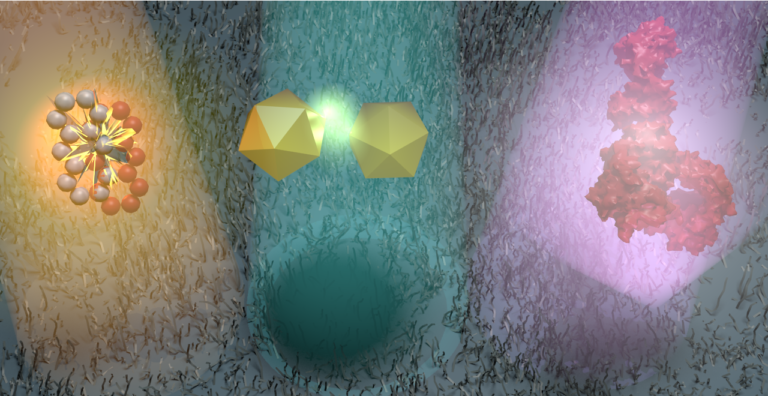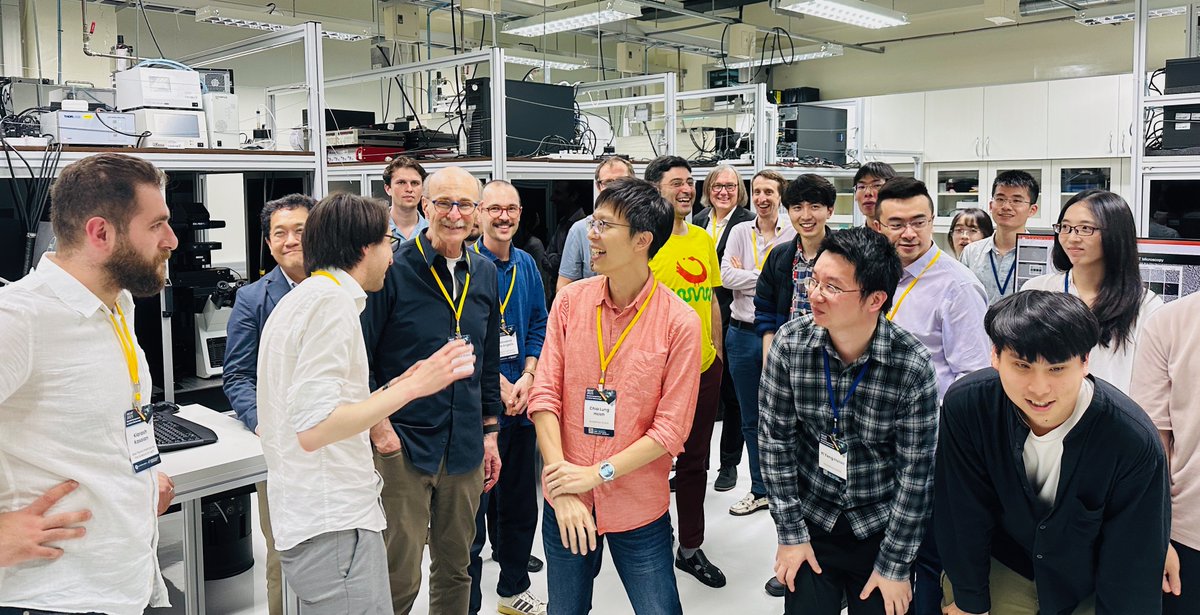Second graduate of the group this year.
Kristýna Holanová, Ph. D.
Congratulations and thanks!
Just wrapped up a fantastic meeting with the iSCAT community in Taipei, Taiwan—great discussions, insightful exchanges, and genuine camaraderie!
Here follows the #PrimeView on #iSCAT, a tool for researchers to explore the #nanoscale non-invasively.
https://www.nature.com/articles/s43586-025-00404-z
The #Primer out today is on interferometric scattering #miscroscoy. By analysing interference patterns, this label-free technique enables detection of nanoscale objects.
📖👉
The Nano Optics group focuses on advancing the knowledge of light-matter interactions below the diffraction limit of light as well as development of novel experimental methods that address current topics in biology, biophysics, and biochemistry. Although we employ a wide range of procedures, our investigative toolbox is mainly comprised of single-particle and single-molecule optical techniques. In particular, approaches such as light microscopy, laser spectroscopy, quantum optics, near-field optics, and plasmonics are combined with chemical and bioanalytical methods and biotechnologies to achieve a robust array of exciting projects.

Single particle scattering
Scattering is the most fundamental process in light-matter interactions. The intensity of light scattered by a finite object is determined by its scattering cross-section, which, in turn, is dependent on the wavelength of the impingent electromagnetic radiation. Simple measurements, such as optical transmission and/or reflection, can achieve single-molecule sensitivity in the visible range.
The first step towards the analysis of single-proteins or other molecular-sized particles is detection. Label-free detection is of enormous importance because it enables the observation of single molecules and particles in their native, unperturbed environments. Recent advances from around the globe have realized this goal with macromolecules via plasmonic nanoparticles, micro cavities, and interferometric detection of scattering (iSCAT). Among these methods, iSCAT is the only approach capable of recording all biomolecular binding events within the field of view reporting a clear ‘yes-no’ information about protein binding.
Thus, a novel set of technologies and research fields emerge based on the label-free detection and imaging of single proteins. In particular, such fields include localization and visualization of protein motion, association/dissociation kinetics of biomolecular interactions, and cooperative behaviors at the single-molecule level.
Nevertheless, the group’s objectives go considerably beyond simply detecting a single protein. Resolving the protein’s form and deducing its function are among the most important challenges we face. However, given that optical microscopy techniques are fundamentally limited by the diffraction of light, it is necessary to combine iSCAT with other optical technologies and phenomena to overcome these classical limitations.
Relevant publications:
- S. Spindler, J. Ehrig, K. Koenig, T. Nowak, M. Piliarik, H. Stein, R. Taylor, E. Garanger, S. Lecommandoux, I. Alves, V. Sandoghdar, Visualization of lipids and proteins at high spatial and temporal resolution via interferometric scattering (iSCAT) microscopy, Journal of Physics D: Applied Physics 49 (2016) 349601.
- M. Piliarik, V. Sandoghdar, Direct optical sensing of single unlabelled proteins and super-resolution imaging of their binding sites, Nature Communications 5 (2014) 4495.
- J. Ortega Arroyo et al., Label-Free, All-Optical Detection, Imaging, and Tracking of a Single Protein, Nano Letters 14 (2014) 2065.
- S. Weisenburger and V. Sandoghdar, Light Microscopy: An ongoing contemporary revolution, Contemporary Physics 56 (2015) 123.



